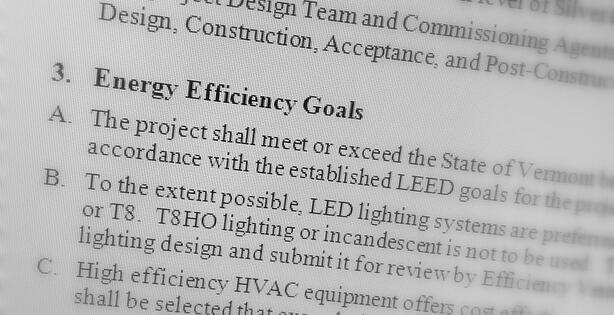I recently visited the construction site for a high performance building project that is pursuing LEED platinum through design-build. The design-build project has all of the bells and whistles that you would expect for LEED platinum: CFL and LED light fixtures with daylighting, energy recovery for ventilation air, and high efficiency heat pumps for heating. Given such a fine collection of green building hardware, I was surprised to find that the high efficiency heat pump heating systems did not meet the state energy code! The particular problem is that the heat pump thermostats do not support temperature setback schedule controls (i.e., scheduled reduction in heating temperature setpoints when the building is unoccupied). A high performance building that does not meet code – how can this happen?!
How It Happened
It turns out that the design documents (drawings and specifications) and the owner’s project requirements (OPR) said nothing about heating temperature setback control[1]. The applicable energy code was indeed referenced by title, but the particular controls requirements were not. And believe it or not, the supplied heat pump controls for these non-compliant units are the standard package provided by a leading international manufacturer of high efficiency units.
The Value of Owner’s Project Requirements (OPR)
In our experience, explicit specification and communication of building control requirements is essential for designing, building, and operating a high performance building. OPRs can be an excellent tool for articulating the high performance requirements for a building from the very start of a building project. Unfortunately, building owners (or soon to be building owners) all too often miss the opportunity to nail down the heating, cooling, and lighting controls requirements that are essential for taking control of a building’s operation (and achieving high performance).
From my perspective as a mechanical and commissioning engineer, high performance is an extension of high requirements. By high requirements, I don’t simply mean LEED platinum or LED lighting; I mean thorough, plain-English requirements that spell out how a building’s energy consuming systems should be operated and controlled. To take control of a high performance building, I highly recommend that building owners use an OPR to answer four simple building control questions:
- How will the lighting be controlled?
- How will the heating be controlled?
- How will the cooling be controlled?
- How will the ventilation be controlled?
And how will you know if the details/requirements are sufficient? Try to articulate the desired range of setpoints, and the capability for building users to adjust setpoints, for each system by time of day, season, and space. If the requirements are not on paper, who knows what you’re going to get.
Defining building controls requirements early in the design process goes against the grain of building design tradition – building controls details are typically specified by designers toward the end of a building design period. Nevertheless, a clear foundation of controls requirements early in the project cycle helps to put the owner in control. Of course not all owners are comfortable with the details and jargon used in building design and controls. That’s where an experienced commissioning engineer comes in – to advise and advocate for the right building control.
[1] Design-build projects typically include less controls specification/documentation than design-bid-build projects. For more information on design-build projects, see Matt Napolitan’s blog post “Successfully Commissioning Design Build Projects.”





